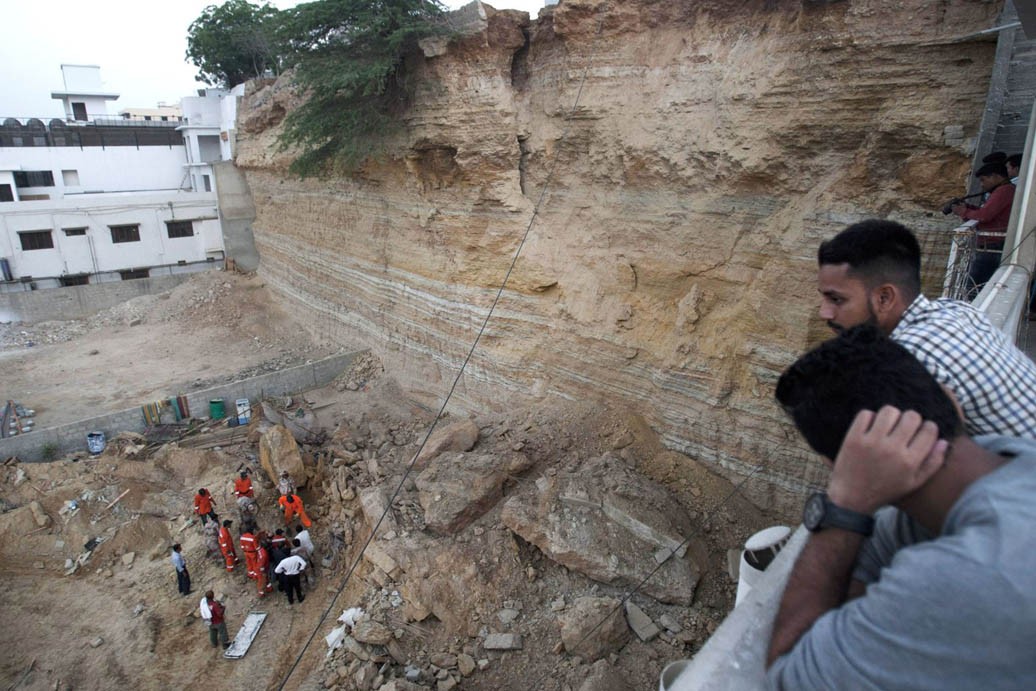
The National Disaster Management Authority in Sindh is working on a curriculum to help people make the right decisions in crisis situations to stay safe

As Pakistan observed the 10th anniversary of the devastating earthquake which wreaked havoc in Khyber Pakhtunkhwa and Azad Kashmir, the Sindh government is contemplating to introduce a comprehensive section on disaster management in its school curriculum -- as natural disasters are becoming a routine affair in the province.
Since past five years, the most recurring calamity to hit the province is floods, which render millions homeless and damage livelihood worth billions of dollars. Last summer, a heat wave struck the provincial capital Karachi, killing over a 1000 people in a span of four days. Recurring droughts, minor earthquake jolts have also become common in the last one decade.
Director General of Provincial Disaster Management Authority (PDMA) Sindh Syed Salman Shah says that his department is working on a curriculum with the help of the World Bank which will be presented to the Sindh Textbook Board by the end of this year.
"It is really important that people learn to make the right decisions in crisis situations," he says. "In developed countries major earthquakes do not result in high causalities because the government teaches its citizens how to remain safe. So, that’s the idea."
Only last Monday, in Karachi’s Gulistan-e-Jauhar area, a middle class neighborhood -- a landslide killed 13 people, including women and children. In an investigation report, the Karachi Development Authority claimed it was a natural calamity as opposed to what many environment activists say was the result of criminal negligence of the officials as illegal settlers were not forbidden from building makeshift huts under massive boulders that fell on them.
Environment experts and urban planners welcome the PDMA’s suggestion to make students aware of the various disasters and train them on survival drills but argued that the curriculum should take into account the typology of natural disasters that hit the province. Given the Sindh government’s track record, some are cynical that it might take a one-size-fits-all approach, without delving into the dynamics of natural disasters that the province is vulnerable to.
Sindh is hit by floods, wildfires, famine, drought and the threat of cyclone lingers on the coastal areas of the province during summers and Karachi -- its biggest city -- is prone to earthquake. The effects of climate change were evident last year when an unprecedented heat wave killed over thousand.
"The government should make the children aware about the various natural threats and how they can deal with each, but major rescue operations will always be the state’s responsibility. At an individual level, the people can help themselves only to a certain extent. The primary task of rescue will always rest with the government," says Mansoor Raza, an independent researcher who studies mega cities.
On the urban front, Raza says safety guidelines are essential while planning a city’s infrastructure to avert any disaster. "I believe high casualty in natural disaster is the result of bad planning," he says.
Referring to the 2005 earthquake, he asks, "where were the land control authorities when people were building three to four story buildings on the mountains in KPK and Azad Kashmir?"
Raza points out that schools run under the Aga Khan management in the quake-affected areas remained safe because they were designed taking the environment into account.
On Karachi’s infrastructural mis-planning, he says that certain neighbourhoods in the city cannot tackle a massive fire incident. If fire erupts, God forbid, vehicles carrying water aid won’t be able to reach these areas and the casualty will be enormous.
The awareness programme can be more far-reaching and effective if the NDMA benefits from the knowledge of the indigenous communities in Sindh who are living here for hundreds of years. They have learned signs to predict various calamities that should be looked into. These people belong to the region and have survived for hundreds of years on their wisdom, says Mansoor Raza. For instance, elders of coastal communities can predict that there is a storm brewing in deep sea when a certain fish is seen jumping frequently in the coastal waters. Or, they can forecast an imminent flood by the turn of water in certain seasons.
Dr Noman Ahmed, the head of architecture at NED University says preparing students for any disaster situation is always welcome, but for that to effectively happen, the children should know the various types of disasters their areas are prone to and work out ways to deal with them.
Annually, Sindh is hit by floods, lightings, cyclones and other disasters, the students should know their responsibilities and the duties of the various government departments in order to take on a crisis situation.
"It’s a complete science. So if the Sindh government is planning to add it to the curriculum. It should be done effectively so that when anything happens, children are prepared," adds Raza.